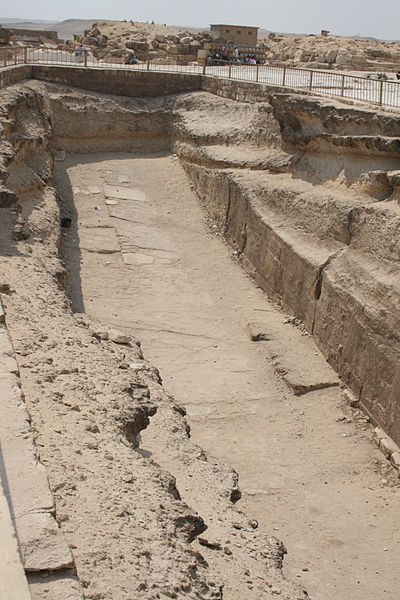Ancients built pyramids, temples, majestic columns, colossal statues, quarried and moved huge blocks of stone. How did they do it?
H.C. Ostrander in his article, "How did the Ancients move blocks of stone as large as houses?" (San Francisco Call, 20 January 1907), asked this very same question.
"Time sitteth on a Sphinx and looketh unto Memphis and old Thebes; while his sister Oblivian, reclineth semi-somnous on a pyramid making puzzles of titanic erections and turning old glories into dreams." Sir Thomas Browne
THE solemn pyramids, enthroned upon their golden sands, the all inspiring grandeur of Karrnak's mighty sanctuary and the lonely majesty of Baalbek's cyclopean wall, all unexampled wonders of a bygone age find their best expression in the calm, grave, questioning face of the Sphinx, the symbol through uncounted ages of the Great Unknown, the everlasting question. What manner, of men were they who carved these stupendous masses of granite from the mountain sides and reared aloft such gigantic temples that the world has never ceased to be amazed at their contemplation? Were the ancient Egyptians, Assyrians and Phoenicians famillar with mechanical forces unknown to the engineers of this present enlightened age? These are questions which present themselves to the mind of the observing traveler as he stands for the first time in the mighty hall of columns in old Thebes, or gazes, awed. and overwhelmed, upon the colossal foundation stones of Baalbek. That mere brute strength could have ever raised those huge stone beams of the Egyptian temples a hundred feet in the air, or dragged from their rocky bed the mightiest monoliths ever, quarried by the hand of man is almost beyond human comprehension; and through all the ages the greatest minds of the known world have puzzled over this fascinating problem. And still the Sphinx smiles on and guards his secret!
Baalbek, the Ghost of Rome
Forty miles inland from the blue Mediterranean and surrounded by the snow-covered mountains of. Lebanon lies Baalbek, in its day the most significant of Syrian cities, full of marble palaces, plashing fountains and beautiful monuments, now famous only for the splendor of its ruines. All the ruins of Rome itself do not equal in magnificence that awe-inspiring group of shattered temples, which even to this day crowns the Acropolis of Baalbek. But, marvelous as are the Roman temples whose broken walls and majestic columns still lift themselves, up on these lonely heights, they are as nothing in comparison with the stupendous masses of masonry-cornposing the cyclopean outer wall, upon which the ancient Phoenicians reared their earlier and more magrnificent temple. The origin of Baalbek is lost in the dim mists of the ages. Like Damascus, its beginning is beyond the reckoning of man. According to the Muslim tradition, the city was founded by Cain, the son of Adam, after his tragic murder of Abel. It was the Baal-gad of Joshua, and was called by the Greeks Heliopolis or the City of the Sun. Situated at the Junction of the great caravan routes — one leading from the solemn and secluded capital of Syria, and one from the desert city of Palmyra — joining here and continuing as one route to the sea. Baalbek was in ancient times a city of vast commercial importance.
Great caravans of camels, laden with the wealth of Arabia, Persia, lndia and far Cathay, stalked in stately proces- sion through her streets from morn until night on their way to Tripoli; for the Phoenicians were the first great seafaring people of history. Often have the splendid streets of this Syrian metropolis resounded to the echo of martial uproar; the blast of the trumpet; the rumbling of chariot wheels; the triumphant shouts of victorious armies — Phoenicians, Assyrians, Greeks, Romans, Byzantines, Turks and Saracens, all have fought and conquered there. And in later limes this fated city that has even known the unspeakable horrors which ever followed in the footsteps of Timour, the Tartar the selfstyled "Scourge of God." But Baalbek has gone the way of other cities of the world - Babylon, Nineveh, Tyre, Carthage, Memphis and Thebes.

